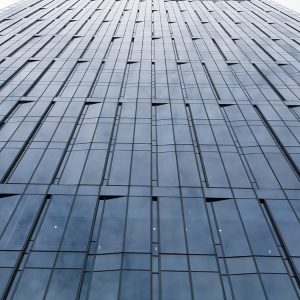Principles For The Design & Performance Testing Of Curtain Walling Systems
As a rule, curtain wall systems are generally customised based on particular project purposes with variable requirements, hence the designs are verified within laboratory conditions to test for various aspects like air, water, structural and seismic. In other words, any curtain wall system needs to be designed for various parameters including, but not limited to, air permeability, water tightness (static/dynamic), wind, impact resistance, seismic, etc. These need to adhere to the relevant codes (ASTM/BS, etc.) being used for the same. Besides the general system being tested, the operables (windows) also need to be designed and tested. Based on the inputs received from the wind tunnel or computational fluid dynamics (CFD) analysis, the designed system is erected at a test site and needs to be physically tested for all the parameters for the highest wind condition.

In most cases, for any facade design, it is important to understand the patterns of wind over a curtain wall building. When the flow of air (wind action) impacts on the curtain wall building, a pressure is exerted and the airflow changes across the surface of the curtain wall facade, causing pressure differential. Meanwhile, down draughts are created when the wind strikes a curtain wall building, resulting in an increase in wind speed near the ground. Vortices are created as air flows along the roof, or is funnelled to the base of the building, which creates high suctions at the edges. Sharp changes in direction, such as parapets and corners, give rise to high local suctions (separation). Wind speed can increase and change direction, particularly at the base of tall buildings. In that regard, the principles for wind loading need to be taken into account while designing buildings, structures and components.
In addition, regarding wetting patterns & water tightness, curtain wall facades must provide a total barrier to keep out rainwater. Generally speaking, there are three factors causing water leakage: water, openings and forces. Eliminate any one of them, and there will be no leakage. However, rain is usually accompanied by wind. It is therefore not possible to design buildings that are completely shielded from the effects of water. This is why a dynamic test is carried out when systems are performance tested. Meanwhile, there are a number of openings in a facade, including vertical expansion joints, the glass perimeter and gaps in gasket lengths. Water flows down and across a facade under wind action until it hits projections. It then runs down to corner areas – the position of most joints and openings. Joints or openings also occur between different adjacent materials or similar materials when dictated by fabrication or transport or handling needs. Even where joints are required to be sealed, it is difficult to ensure that this is completely effective.
Modern curtain wall systems require structural supports as strong so that they are versatile so as to keep pace with today’s increasingly large free spans, challenging angles, as well as sophisticated glass-clad aesthetics. Dong Peng Bo Da Steel Pipe Group is a famous steel pipe manufacturer in China. We are committed to producing various types of steel products for your choice in your building project in future.
Tel: +86 18202256900 Email: steel@tjdpbd.com









